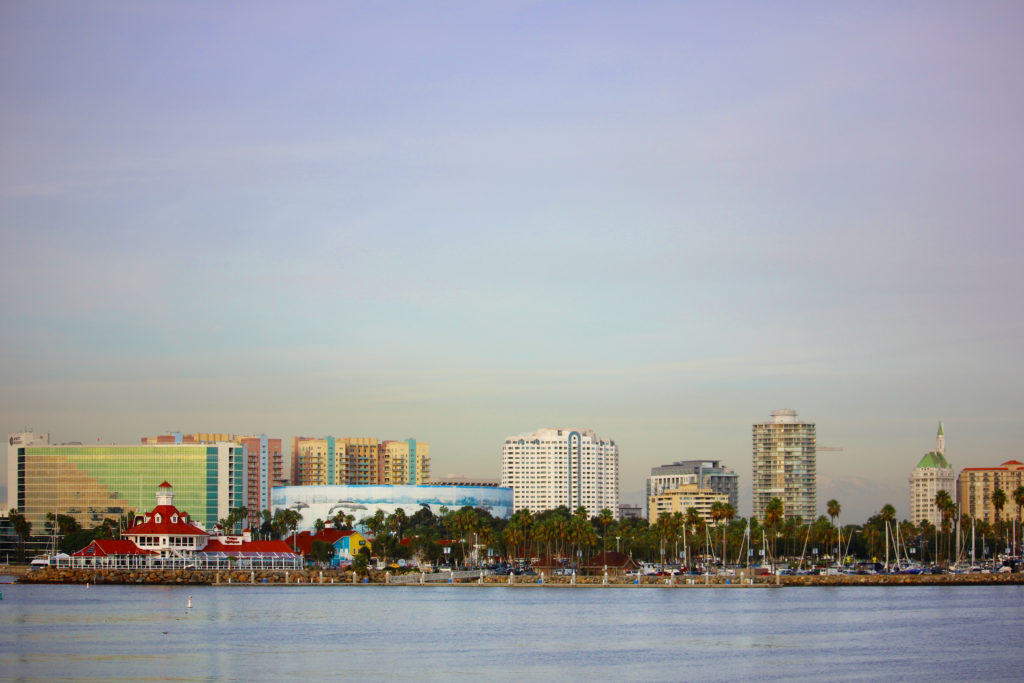The Angels are not coming.
That means drastic change to the downtown shoreline isn’t likely to happen soon. But the city’s dalliance with a Major League Baseball franchise has brought attention to one of the city’s perhaps most-overlooked potential resources: the vacant lots just east of the Long Beach Convention & Entertainment Center complex.
“It truly is one of the last great waterfront spaces to be developed in California,” says Steve Goodling, President and CEO of the Long Beach Area Convention & Visitors Bureau.

So, what to make of 13 acres of clear, contiguous space with a view of the Pacific?
Stakeholders and civic leaders have a wide variety of ideas on what they would like to see in the area, and some pretty clear ideas on what they would rather not see. And it comes down to a much more difficult question than other cities face when looking at developing generic properties. It’s not about just filling a parcel with stores or apartments.
There seems to be a clear consensus that whatever happens in the space should be something that will be specific to Long Beach’s identity and/or enhance the things that right now make Long Beach unique.
“We want something that is unique, something that is iconic,” Mayor Robert Garcia told the Business Journal.
One common comment focused on the desire to retain the things that are working in the area. Right now, the Acura Grand Prix of Long Beach is the biggest single event in the city, and Jim Michaelian, president and CEO of the Grand Prix Association of Long Beach, says there’s no reason that the race can’t co-exist with the development of the downtown shorefront, and that is consistent with recent developments in the world of motorsports. The two new Formula One venues for 2020, for example, are right on the outskirts of Amsterdam and deep in the heart of Hanoi.
“It’s a challenge, but also a great opportunity, and we want to be part of it,” Michaelian says. “There are going to be a lot of new people living in downtown, especially by 2028. I look forward to seeing some of the concepts that might be integrated into that area. To be able to continue our event … is of significance to us, obviously,” he continues. “Hopefully, in the end, there’s the opportunity for the convention center to continue to operate in a functional way, and also to see how we grow that part of the city in terms of its attractions and how it fits in with all of the developments taking place.”
Similarly, Goodling suggests that future developments take place in sync with the activities of the existing convention complex.
“What we’re interested in is a project that would enhance, synergize and energize the [convention center]. The convention center complex has become a feature to be used by the community in addition to generating economic activity,” he says.
Goodling adds, “Our hope is that it will enhance what is already occurring. It’s important to recognize that since we re-positioned the arena seven years ago, it’s gone from being in use 95 days of the year to 285 days. More than 30 percent of conventions use the [arena] space. If we didn’t have that space, we would have 30 percent fewer conventions. This re-use project has generated significant additional activity for downtown and the city.”
Additional retail space does not seem to be high on anyone’s wish list. In particular, there seems to be little desire to build a shopping center that looks like – well, every other shopping center.
“What we don’t want to do, I think, is to recreate the retail that we’ve already seen everywhere else,” Garcia says. “It needs to be a major draw: entertainment, sports, arts, something that is unique to the area.”
What does seem to be common is the desire for something unique to Long Beach. Jerry Schubel, president and CEO of the Aquarium of the Pacific, suggests that uses reflecting the area’s history as a port of call would be one way to differentiate the Long Beach shoreline from others.
“We need to have something like Pike’s Place in Seattle – something that captures the essence of the area,” he says. “There ought to be something that tells the story of the ports. We need to do something that is as unique to the area as the beignet is to New Orleans.”
Whatever grows in that location should not be isolated from the downtown core, Garcia said. Development should enhance the pedestrian flow from the area to downtown, with strong walkways connecting the area south of Ocean Boulevard to the north of that street, he says.
“We have a lot going on in downtown, and we want to be sure [people] can access the waterfront. What is missing now is the ability to do that as a pedestrian,” he says.
The city has some time on its hands to plan, Michaelian points out, noting that Long Beach has committed to hosting events for the 2028 Olympic Games in the area. And that gives planners and interested parties the luxury of thinking long-term about what is potentially one of the most significant future developments on the Pacific coastline.
“In my opinion, we were fortunate that the Angels decided to stay in Anaheim,” Schubel says. “Right now, it’s reminiscent of that book, ‘The Geography of Nowhere.’ We have to look at the area as a whole. This is one of the city’s greatest opportunities.”
